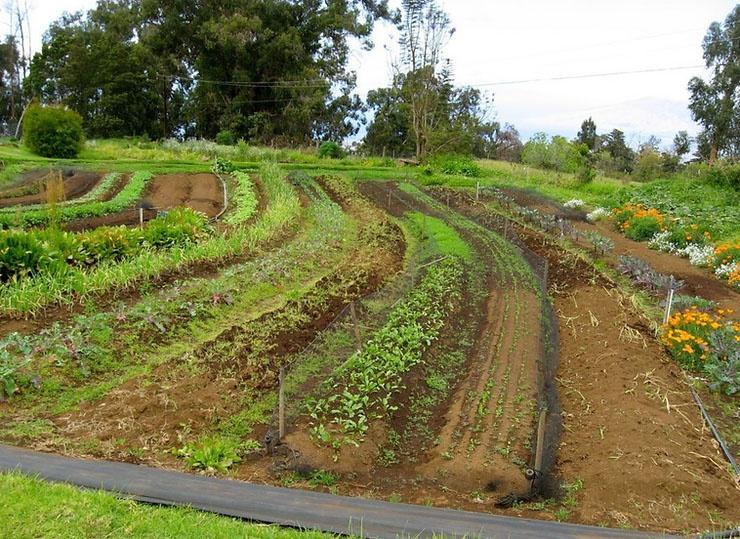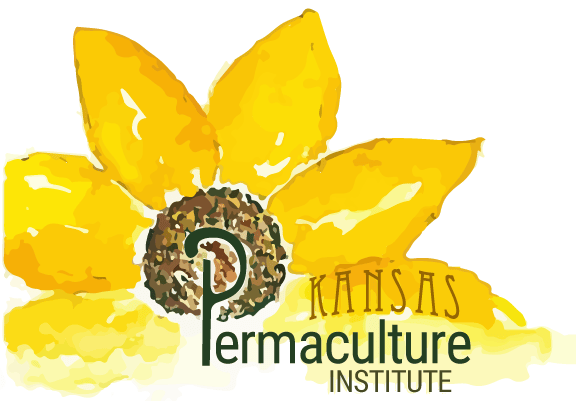Four Benefits of Contour Farming
By Sasha Banks-Louie

Decades of tillage and a lack of cover cropping have caused serious harm to the world’s hillside cropland and its soil structures, creating an urgent need to explore alternative cultivation methods, such as those used in contour farming.
While the practice of contour farming has been around for centuries, conventional farmers have been slow to embrace the approach. One reason is that “many farmers struggle to delineate contour lines,” says Kansas Permaculture Institute’s Education Chair, Amber Lehrman, adding that it’s also much easier to maintain crops on hillsides when they’re planted in straight, up and down rows, than it is to cultivate them across a natural slope that bends, curves, and changes elevation.
Lehrman, who will be teaching a contour lines workshop in Kansas on February 23, says despite the extra effort, there are huge advantages of contour farming that far outweigh its perceived difficulty. Before planting your next row crop on some hilly terrain, Lehrman urges you to consider these four benefits of contour farming:
1. Prevents Soil Erosion
Conventional farming practices that cultivate along straight, long, and even slopes that are parallel to the flow of water, accelerate the rate of erosion when it rains because all of the water flows straight downhill. This often results in the soil being “washed away” along with the crop.
Farming across slopes—perpendicular to the flow of water, in contrast, acts like a barrier, which aids in slowing down runoff water, allowing it to soak into the soil completely.
Contour farming can also reduce soil erosion by as much as 50% compared to farming up and down hills, according the Natural Resources Conservation Service. The agency also notes that because contour farming reduces water runoff, it controls the amount of twigs, pebbles, sand, and other debris, resulting in better water quality.
2. Improves Water Irrigation
Farmers can further help slow down the flow of water during rainy seasons, by digging a hillside ditch or swale across a slope, says Lehrman.
In addition to collecting excess soil moisture and allowing a more even distribution of irrigation or rainwater to the crops, Lerhman says “swales help sink additional water into the soil, so it can be used during dryer weather without needing to irrigate,” she says.
In the contour lines workshop, participants will learn how to design both “true on contour” swales, which catch and hold water across the landscape, as well as slightly “off-contour” swales, which slowly move water from one location to another, while still allowing the water to sink in slowly. “These off-contour swales not only help increase soil moisture, but they also prevent excessive surface water that impedes equipment access to fields,” Lehrman says.
3. Boosts Nutrients
The unsung hero of contour farming is increased soil fertility, Lehrman says. “In a contoured design, a farmer can plant different crops on different strips, and alternate them depending on the nutritional needs of each type of crop,” she says.
For example, legumes can be alternated with corn, so the corn can use nitrogen that the legumes leave in the soil.
The increase in soil moisture from swales also promotes biological activity in the soil, which releases additional nutrients to plants. In the contour lines workshop, participants will discuss examples of how swales on contour have opened up heavy clay soil into a more porous and fertile structure, conducive to a variety of crops.
4. Increases Yields
Reducing runoff, soil erosion, and increasing fertility are all key benefits of contour farming, yet the practice has also shown increases in crop yields. In a recent study conducted by the Soil Conservation Service and the University of Nebraska, by retaining moisture and sharing nutrients in the soil, the majority of farmers surveyed reported a 5-10% increase in yields.
The study also found that when farmers used contour farming methods under ideal conditions, such as on slopes with gradients between 2% and 10% and precipitation rates under 6.5 inches per year, their yields increased by margins of up to 50%.
To learn more about contour farming, check out KPI’s new “Mapping Contour Lines” workshop here.

